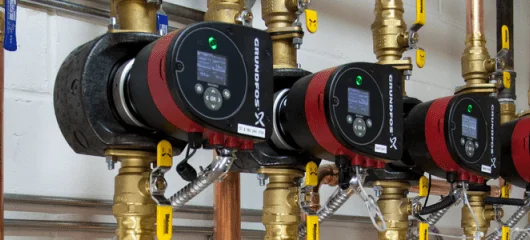In this Episode Greg and Dan - our Ask Caleffi Podcast hosts - discuss what a scald-protection valve is and why they are SO important (protection protection protection!). What temperature of water is safe? Dangerous? Who is most at risk? Are there applicable industry guidelines (hint: ASSE 1070)?
Learn about how they work, where they are used, and why they are so important in the industry.
Thanks for tuning in!
Listen
Want to hear YOUR QUESTION on the Podcast? Take this quick four-question survey for your chance to hear your question in a future episode.







Hi. Here in California we need to conserve water. Every time we need hot, we pour all the cold water in the hot pipe down the drain until the hot arrives. Could we use a thermostatic mixing valve at the point of use, fed by a small point-of-use hot water tank on the hot side (140F/60C) and by central hot water on the cold side (70F/25C rising to 110F/43C when the hot arrives)? The heater can run on normal 120V and sized to match the volume of water in the pipe. Thanks!
John, You can use the point of use mixing valve with a small heater set to 140F as long as the hot water supply coming to the fixture is also set to an elevated temperature. The point of use valve is designed to mix the hot water temperature down at the fixture. If the main central hot water heater temperature is not elevated once that water gets to the mixing valve the valve will drop the temperature.